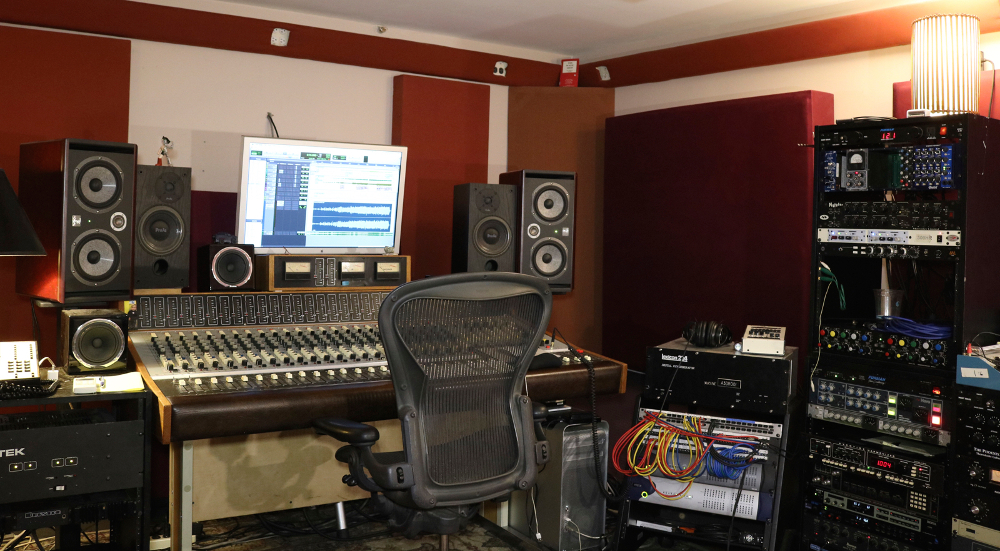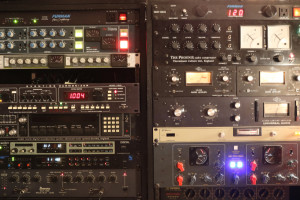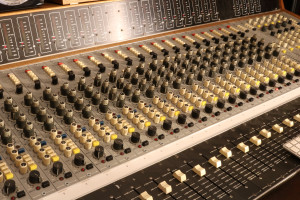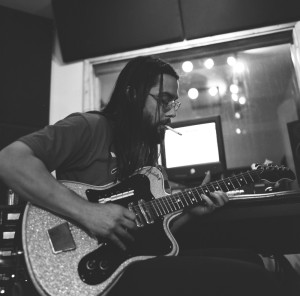Making the Mix Room: Vacation Island – SoHo, Manhattan
Who’s back in black? Matt Boynton, that’s who.
When last we looked in on this unassumingly driven engineer, he was well on his way in Williamsburg. But the real estate moguls are digging ever deeper into Brooklyn, and his growing Vacation Island operation was sent packing.
But nothing is going to stop Boynton, whose credits include MGMT, Kurt Vile, and black Dice, from recording and mixing – we mean nothing. So he delivered his determination across the river, and returned from whence his audio career was born: The Magic Shop.
Boynton’s address isn’t the only thing that’s changed, either. As you’ll see, his plain-spoken mixing wisdom grows ever deeper. We say: miss out on his sage advice below at your own risk.
Mixer Name: Matt Boynton
Website: http://www.vacationislandrecording.com
Location SoHo, Manhattan, inside the legendary Magic Shop studios
Clients/Credits MGMT, Kurt Vile, Hospitality, Lissie, black Dice, Gang Gang Dance, Zachary Cale. Currently working on Tyler Lyle.
Mix Room Hunt My studio, Vacation Island Recording had to close when the landlord decided to pursue other options, so I went back to The Magic Shop, where my career really started, and took over a private mix room downstairs.
Mix Philosophy Every mix is different, but generally, I like to keep things simple.
Mixing is all about balance and the song usually speaks for itself. Sometimes, I’ll start by getting a good balance without processing anything yet. I usually start with the core of the song, the common thread or the most important thing.
Whether it’s the rhythm section or vocals and acoustic guitar, I’ll get those elements balanced and sounding really great then add in the other tracks and see how they fit. Panning, dynamic processing and equalization all help me achieve the proper balance.
With panning, I like for things to be counter-weighted in some way. If there are elements on one side, they should be balanced by another element on the other side. It could be anything, as long as they carry the same weight and presence in the mix, or if there’s an interplay between the two elements through different sections of the song.
Sometimes I’ll intentionally mess with that balance. For example, a song could start with all the weight on one side like a hard panned guitar, then when the chorus hits another element comes in on the other side to fill the void. All of a sudden the song opens up and the stereo field fills out. I think that makes for a dynamic listening experience. There’s tension for the listener that’s resolved when the coolest part of the song happens.
A mix is a story that you have to hear from start to finish to understand. Everything is in there for a reason. As each element unfolds it reveals a new layer that becomes part of the bed. A mixer needs to make every event make sense. Its problem solving, that’s why it’s called engineering.
I tend to like mono stereo sources. I find the song begins to lose focus with a lot of true stereo sources — it becomes hard to hear separate elements. With piano for instance, I like to put piano in mono and pan it somewhere special. That way you can really hear the part.
I think some engineers tend to overdo it with stereo miking. People think, “Oh, it’s stereo miked so I have to keep it that way,” or “The background vocals are double-tracked so you have to hard pan them, right?” That way, the mix often ends up being all muddy and you can’t really hear anything.
I’m especially fond of mono drums. Sometimes stereo overheads can be very distracting. A lot of my favorite drum recordings are mono.
There are no rules, you can do whatever you want—or at least, whatever is best for the song.
Sound and Design Bass traps are essential. The room is designed to be as flat as possible, meaning you can be anywhere in the room and hear the same thing.
The Technical Approach My method of mixing is a true hybrid of digital and analog. I sum everything through the first 8 channels of my Neotek Series 1E and do all my processing through channels 9-24.
In Pro Tools, I use hardware inserts to get in and out of those channels. The Pro Tools outs are normaled to the console line inputs and the direct outs off the console are normaled to the Pro Tools inputs, completing the hardware insert loop. All the levels are done in Pro Tools. It’s a split mixing concept, summing on the left and processing on the right.
With this method I can use the console like a console. I can use the analog EQ and I can insert dynamic processing on a channel just like the old days but my mix is actually happening in Pro Tools. The console is just a giant piece of outboard gear. My Pro Tools rig has 32 I/O. I use I/O 1-8 to sum, 9-24 for processing and 25-32 for auxiliary sends and returns to and from effects.
Here’s an example: The vocals may have a hardware insert going to channel 9 on the board. On channel 9, I can insert an LA-3A, EQ the signal, distort it or do whatever I want. At the same time, the vocal track can be bussed through output 25/26 to my Sony reverb. The Sony then returns to input 25/26.
In Pro Tools I create an aux return with input 25/26. When the mix is done I’ll duplicate the vocal track including the sends, automation and group assignments and bus the original track to the new duplicate.
The only thing I don’t print is the reverb because there’s usually multiple things going to the same unit. Those settings, I’ll just write down. The mix is instantly recallable later once the reverb and buss compression is set.
Choice Gear
DAW: Protools HDX 11 32 I/O
Console/Control Surface: Neotek Series 1E
Monitors: Pro Ac studio 100/Bryston 3B, Focal Twin 6 BE
Plugins: I mostly use Sony Oxford EQ with GML package, Dynamics, Limiter, Inflator
Instruments: Gibson ES 125
Secret Weapons: Delays and reverbs, High pass/Low pass Filters
Outboard/Hardware/Tape:
Tube Tech SMC 2B, GML Stereo EQ, Neve 33609, Alan Smart C2, Thermionic Culture The Phoenix, 2x LA-3A, UA 1176, Mcmartin Limiter, Chandler Zener Limiter, A few not so great 500 series compressors, Rupert Neve Tape Emulators, Eventide 949, AMS RMX 16 Reverb, Sony MU-R201 Reverb, Ibanez SDR 1000 Reverb, Ibanez AD202 analog Delay, Yamaha E1005 Analog Delay, Fostex Stereo Spring Reverb, Lexicon 224 Reverb, Studer A 80 ¼” 2 Track
Some of my favorite outboard effects are the Sony MU-R201, Ibanez SDR-1000, Ibanez AD202, Yamaha E1005, Eventide 949, LA-3A, Neve 33609, UA 1176.
The Sony reverb and the Ibanez reverb are exactly the same unit. They are true stereo which I like. I can pan a signal to either side in them. The delays are also really similar. I like to have multiples of the things I really like the sound of.
Tune Up I’ve built several studios so I have a general thing I like. Bass traps are the most important. Once you have the bass under control everything else is a breeze.
Audio Examples

http://pitchfork.com/reviews/albums/18905-hospitality-trouble/
So You Want To Be A Better Mixer The most important thing is to listen. If something bothers you about the mix, change it. If it honestly sounds cool to you, it’ll probably sound cool to other people.
— Matt Boynton, Vacation Island
Please note: When you buy products through links on this page, we may earn an affiliate commission.










